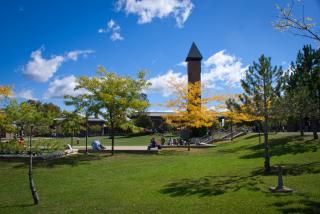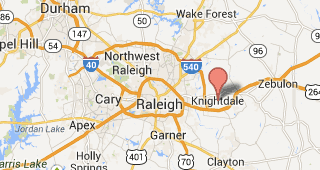When a Student Loan is Too Much to Pay
Student loans are a significant category of debt for many consumers. This is particularly true in the Raleigh-Durham area, home of numerous leading universities. With outrageous educational price inflation over the last decade and continued weak job markets, many former students are left with student loan balances far exceeding their ability to repay. Unlike almost every other consumer debt, bankruptcy is seldom effective at getting rid of student loan debt. Instead, for borrowers of federally backed student loans, an alternative repayment plan is often the best option.
The primary two income-sensitive repayment plans offered on federal student loans are income-contigent repayment (ICR) and income-based repayment (IBR). The two plans have somewhat different calculation methods and loan eligibility. As income-based repayment is the newer of the plans, and for many borrowers will offer a lower payment, I will spend more time discussing it. The Department of Education offers a calculator for ICR.
Income-based repayment is available to borrowers who have a "partial financial hardship." Such a partial financial hardship exists when a the standard student loan payment exceeds 15% of the borrower's discretionary income. For these purposes, discretionary income is adjusted gross income (AGI) (a tax term and particular measure of gross income) minus 150% of the federal poverty guideline. If a partial financial hardship exists, then the student loan payment is capped at that same 15% of discretionary income. As an example, for a median North Carolina household of 3 with a gross income of $54,310, 150% of the poverty level is $27,795, leaving discretionary income of $26,515. 15% of this income is $3,977.25, which would be the annual maximum payment under IBR ($331.44 monthly). In that particular example, the payment is 7.3% of gross income. The payment can be $0 if the gross income is less than 150% of the poverty level. The payment amount is recalculated annually. A nice IBR calculator is provided by the Project on Student Debt.
IBR (and ICR) offer the additional benefit of a discharge of the balance of the student loan after 25 years of payments. It can be difficult to anticipate whether a loan will be repaid or not before 25 years, as the borrower's income is uncertain for such a long period. A shorter 10 year period is available to qualifying loans (federal direct loans, including federal direct consolidation), if the borrower is employed in public service, particularly government or non-profit jobs.
Income-based repayment requires a certain level of diligence by the borrower, as annual income recertification may be required. Nevertheless, it can the most effective way to for a borrower to obtain a long-term manageable payment amount. Even more favorable IBR terms are in the pipeline for new borrowers.
What if the student loan is already in default?
A student loan in default is a special case. Once a loan has been defaulted, the lender may use aggressive collections techniques provided by federal law, including wage garnishment, tax refund interception, and imposition of collections costs. A loan in default is also not eligible for an alternative repayment plan such as income based repayment. For borrowers with student loans in default, one strategy is to get the loan out of default and then into income based repayment. While not necessarily the only way to get out of default, three possible ways to do so include:
1. Student Loan Rehabilitation
The rehabilitation process for most federal student loans consists of the borrower making at least 9 timely payments within a 10 month period, and then requesting the loan be rehabilitated out of default. These payments are not necessarily the standard loan payment, but rather a "reasonable and affordable" payment. This payment amount is determined from the borrower's income and expenses, but there is a possibility of dispute between the servicer and borrower about what is affordable. If rehabilitation is being attempted, a borrower should obtain a written agreement with the loan servicer.
Rehabilitation has a number of downsides. Under the 2008 Higher Education Act, loans can only be rehabilitated once after August 14, 2008. Therefore, defaulting a second time on a rehabilitated loan places the borrower in a situation where rehabilitation is no longer an option to get out of default. It also takes several months to rehabilitate the loan, time during which collections activity may continue unless the borrower and servicer have agreed otherwise. Servicers and collections agencies may also be aggressive in demanding "reasonable and affordable" payments that are in fact neither reasonable nor affordable.
2. Student Loan Consolidation
Consolidation can be a quick way to get a student loan out of default and eligible for IBR or other flexible repayment options. The only consolidation loans that apply are federal direct consolidations loans. For a direct consolidation loan, a borrow must have at least one direct loan or Federal Family Education Loan Program (FFELP) loan. Agreeing to select IBR or ICR for the consolidation loan removes any requirement for making payments prior obtaining consolidation.
Consolidation out of default is also a one-shot deal, as a defaulted consolidation loan cannot be re-consolidated out of default. Rehabilitation may be an option for a defaulted consolidation loan. Borrowers should be careful exactly what loans they consolidate, as some benefits to particular program loans may be lost, and some loans might impact IBR eligibility for the consolidation loan.
3. Bankruptcy Cure of Default
In a chapter 13 bankruptcy, a debtor can propose to cure default on a long-term obligation under section 1322(b)(5) of the bankruptcy code. At least in theory, this provides a means to restore a student loan to non-defaulted state. There are at least two complications. One, it is not universally accepted by bankruptcy courts and standing trustees that student loan can be treated in this fashion. In particular, some take issue with an unsecured student loan lender receiving more favorable treatment than other unsecured creditors such as credit card lenders. Two, curing a default and maintaining payments can be practically very difficult for someone wishing to enter income based repayment. During the life of the plan, the debtor would have to pay the normal student loan payment, plus paying back the defaulted past-due balance. This math seldom works for a debtor without unusual circumstances.
Photo of Fulton Montgomery Community College by Clemens v. Vogelsang. Licensed under Creative Commons License, original at http://www.flickr.com/photos/vauvau/5799609162/
- Log in to post comments




